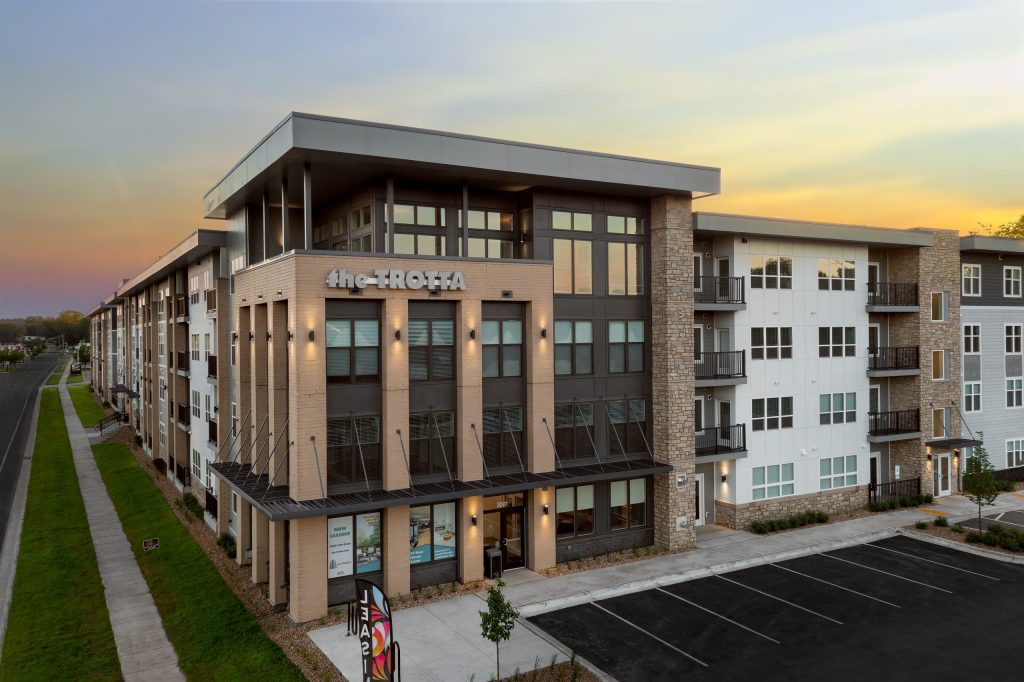Understanding Pattern Language: Exploring Christopher Alexander’s Theory in Architecture
ramaker insights
Understanding Pattern Language: Exploring Christopher Alexander’s Theory in Architecture
As conceptualized by Christopher Alexander, Pattern Language is a comprehensive system that offers a framework for understanding, designing, and constructing spaces that align with human needs and values. It consists of a collection of design patterns describing a recurring problem within the built environment and its corresponding solution. These patterns are context-specific and aim to enhance the quality of life for those who inhabit or interact with architecture.
Michael Carlson, one of Ramaker’s Architectural Project Managers, explained that at its core, the goal of Pattern Language is “to make a more living and beautiful world through acts of design and construction.”
In this article, we will break down the basics of Pattern Language, and how it informs design decisions to create beautiful, functional spaces.

Key Elements of Pattern Language
Patterns
Patterns are the fundamental building blocks of Pattern Language. Each pattern concisely describes a design problem, the context in which it arises, and a solution that successfully resolves the problem. Patterns capture the collective wisdom of generations of architects, expressing design principles that have proven to be effective and meaningful.
Contextual Appropriateness
Pattern Language emphasizes the importance of designing in harmony with the surrounding context. It considers factors such as climate, culture, geography, and social dynamics to create buildings that are responsive and respectful of their environment. Patterns are not prescribed formulas but adaptable guidelines, encouraging architects to interpret and apply them according to the specific context.
User-Centric Approach
Alexander’s theory places significant emphasis on the end user or occupant of the architecture. Patterns are developed to improve the overall experience and well-being of the individuals who interact with the built environment. By addressing human needs, patterns promote a sense of comfort, connectedness, and functionality, resulting in spaces that are responsive to the users’ requirements.
Complexity and Wholeness
Pattern Language recognizes the inherent complexity of architectural design and advocates for a holistic approach. Rather than reducing the design process to isolated elements, it encourages architects to consider the interrelationships and connections between patterns, promoting a harmonious and integrated whole. This approach fosters coherence and continuity within the built environment.

The Impact of Pattern Language in Architecture
Humanizing Spaces
Pattern Language prioritizes the well-being of individuals and communities by designing spaces that enhance their quality of life. By addressing human needs, patterns can create comfortable, inviting, and supportive environments, ultimately fostering a sense of belonging and connection.
Sustainable Design
By integrating context-specific patterns, architects can develop sustainable design solutions. Patterns that consider climate, energy efficiency, and resource management enable the creation of environmentally responsible and resilient buildings that minimize their ecological footprint.
Empowering Architecture
Pattern Language empowers architects and designers by providing them with a shared language and framework. It offers a repository of knowledge and experience, enabling practitioners to draw upon successful design solutions while adapting them to specific contexts and challenges.
Community Engagement
Pattern Language facilitates community engagement and participation in the design process. By involving stakeholders and incorporating their insights and aspirations, architects can create built environments that reflect the unique values and identities of the community.

Pattern Language in Action
Michael Carlson and the rest of the design team used Pattern Language to inform the design choices for the Trotta Apartments in Middleton, WI. Early in the design process, the team used Pattern Language to determine the site layout. The final design fills the site with the building to reinforce the street wall to provide more character and activity at the street level. It was also important to explore how the building would affect the amenities near the site, like trees and other buildings. The designers took a comprehensive look at the surrounding neighborhood, ensuring that the building is visually appealing while also preserving the existing elements that are crucial to supporting life.
The resulting building incorporates many of Alexander’s patterns, such as the cascading roof that gives the building a distinctive identity while also serving to help differentiate the different areas of the building. Externally, the roof heights reflect what is going on inside the building, accenting the main entrance and stairwells to help guide residents and visitors to the doorways.
Pattern Language, rooted in Christopher Alexander’s visionary thinking, has revolutionized architectural design by shifting the focus toward human needs, contextual appropriateness, and holistic thinking. Through its patterns and principles, architects can create spaces that are not only visually appealing but also functional, sustainable, and conducive to human well-being. By embracing Pattern Language, architects can contribute to the creation of built environments that resonate with the people who inhabit them, fostering a harmonious and enriching relationship between architecture and its users.
Our experts can help you incorporate pattern language into architecture projects of all types. Interested in learning more? Contact us today!
About the Author

Michael Carlson is one of Ramaker’s Architectural Project Managers. He has more than 20 years of experience creating and preserving affordable and mixed-income housing and commercial real estate in both urban and rural communities. He has worked with non-profits and both public and private developers. Pattern Language is one of the driving forces behind his designs, and he is passionate about creating spaces that provide the best possible experience for the end user.



